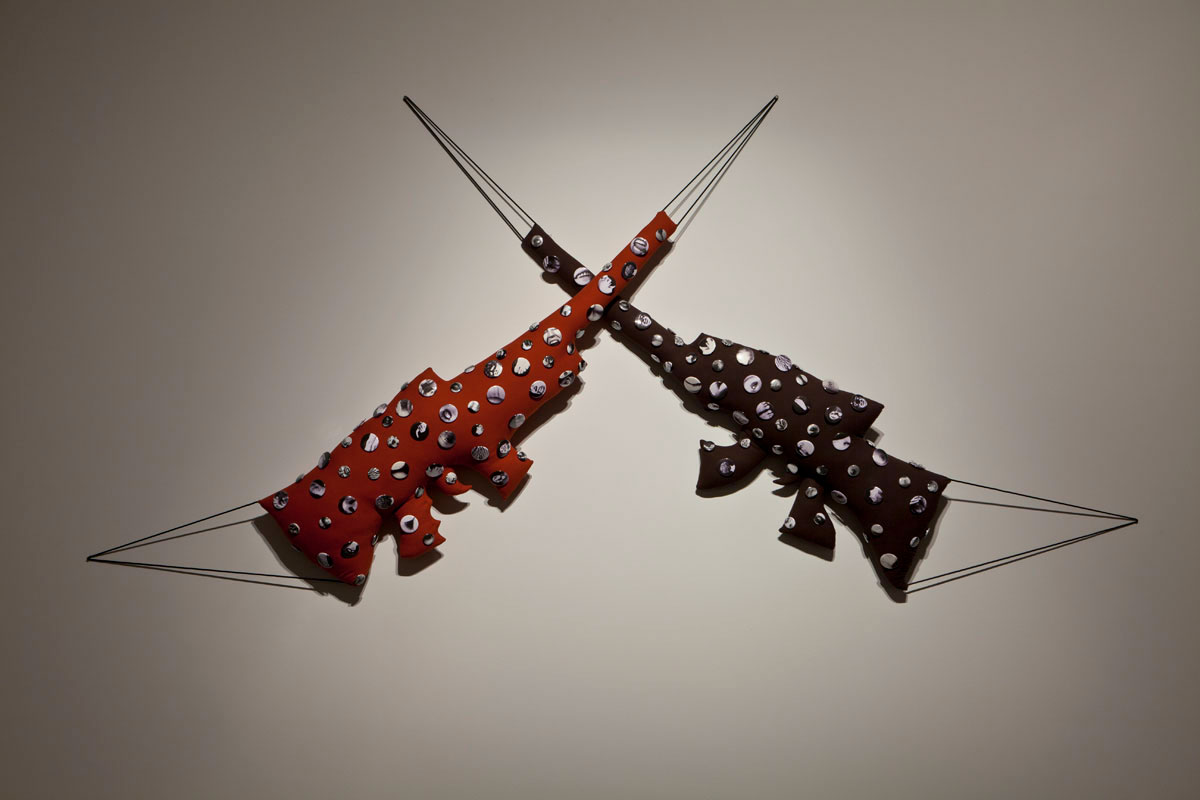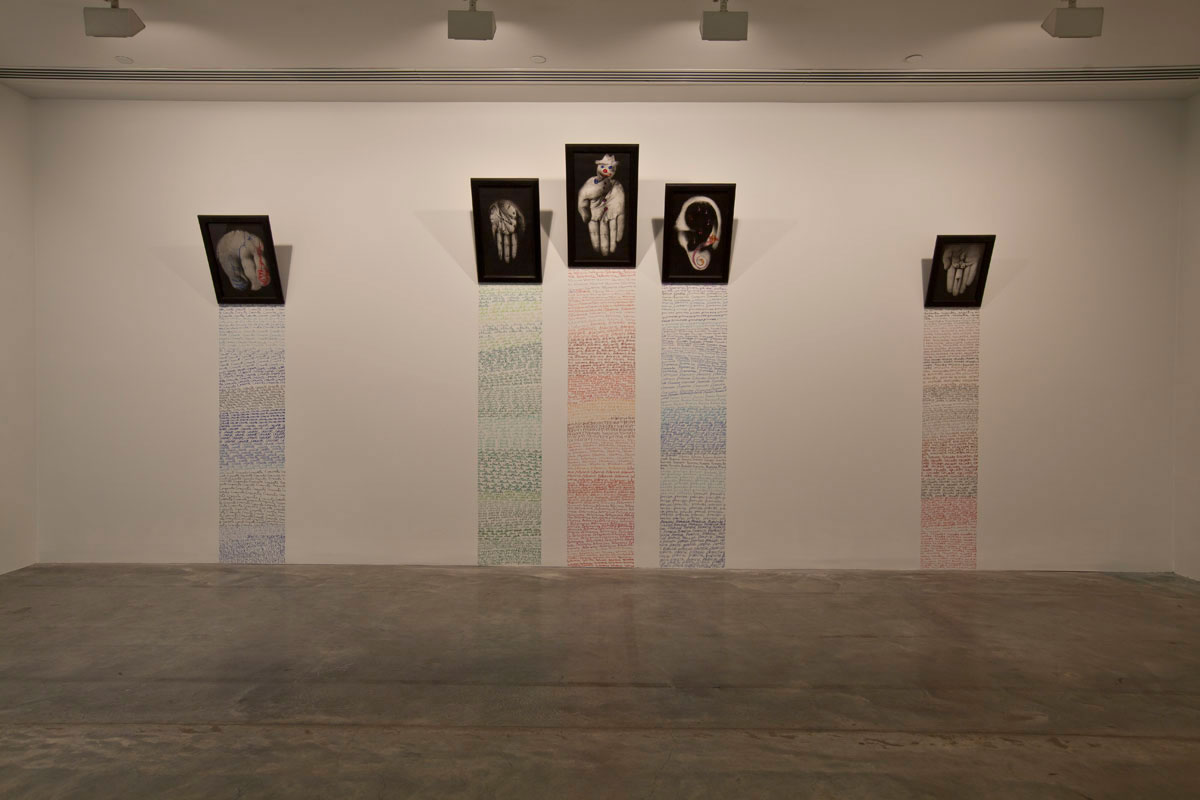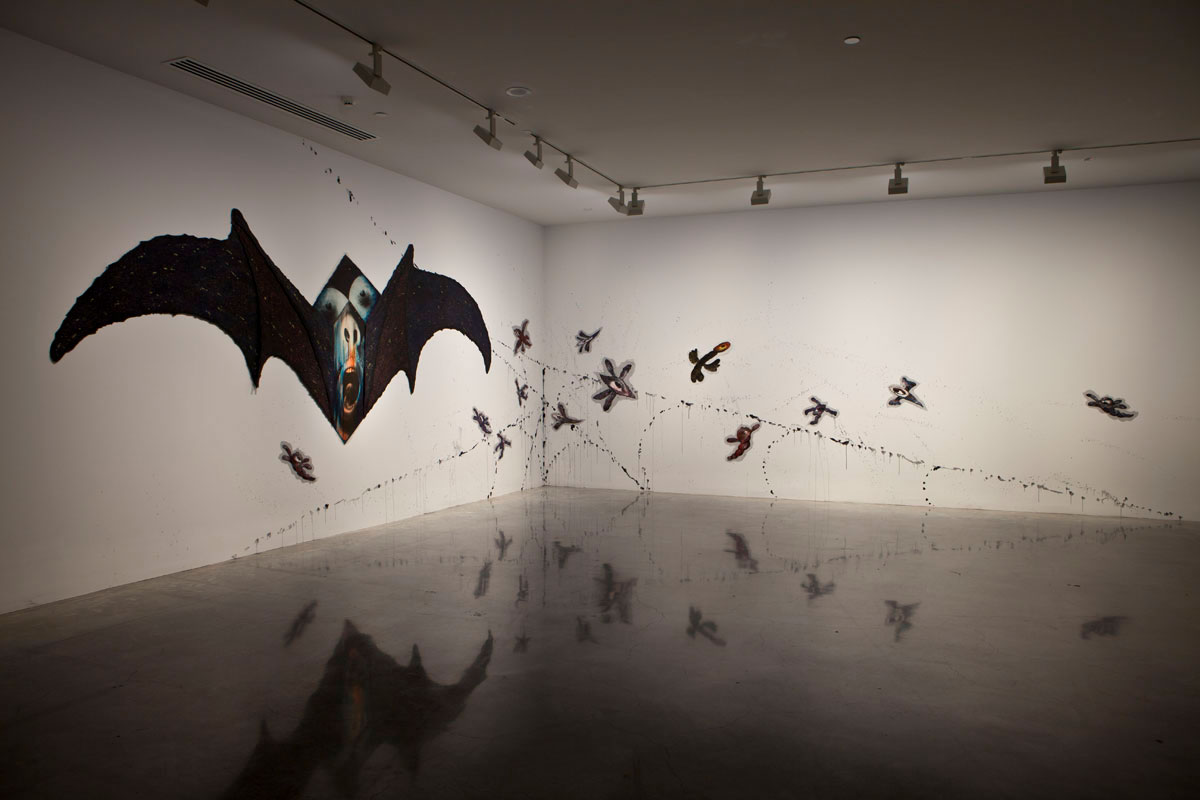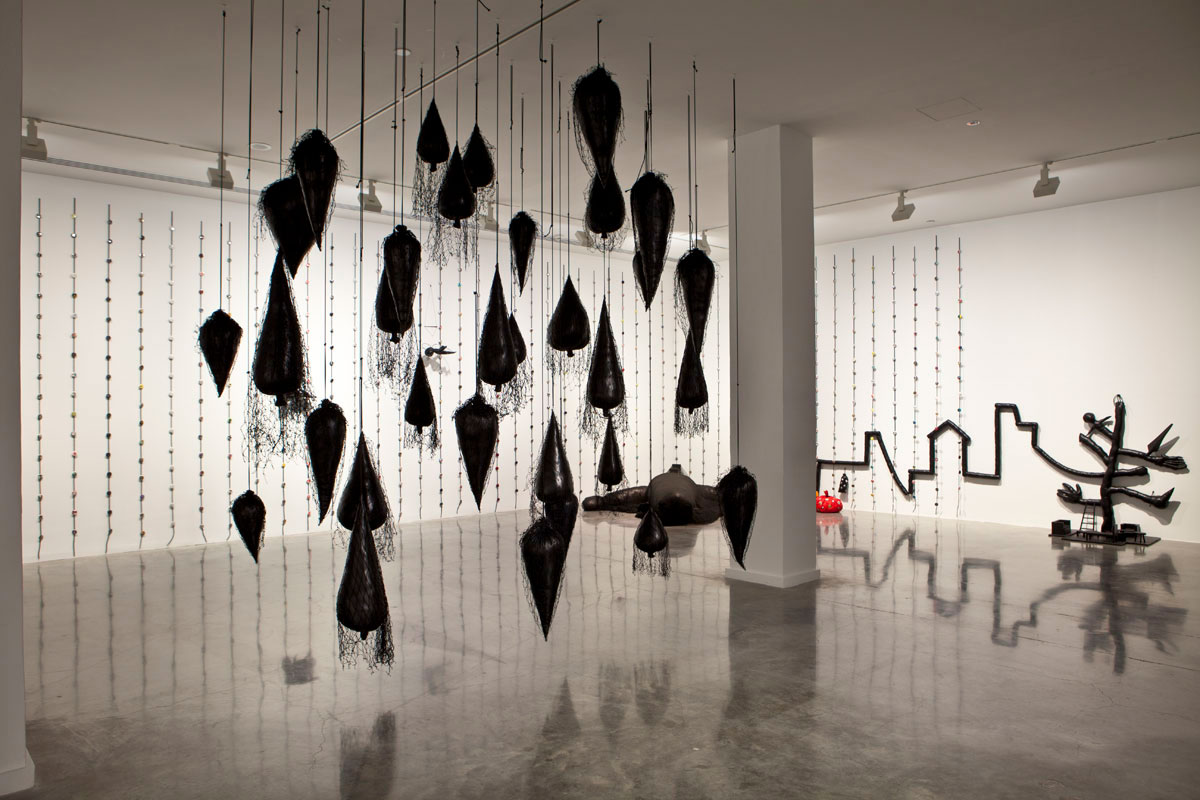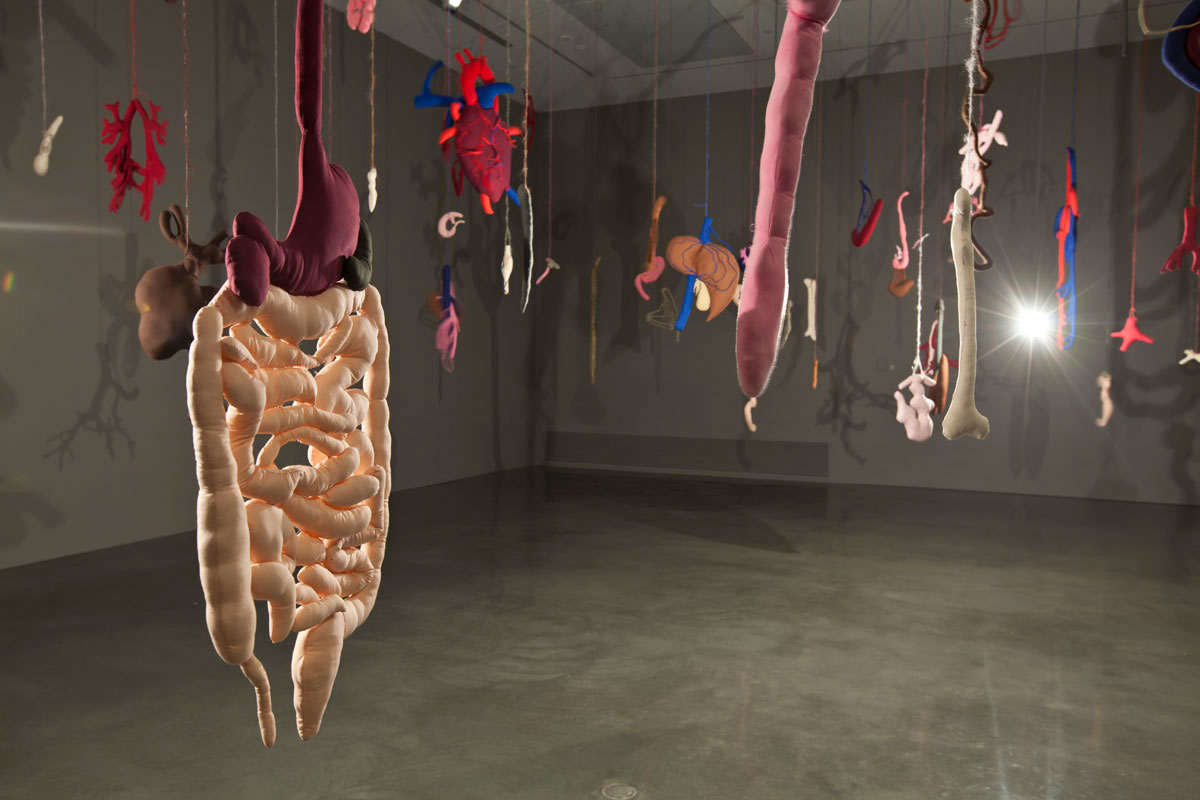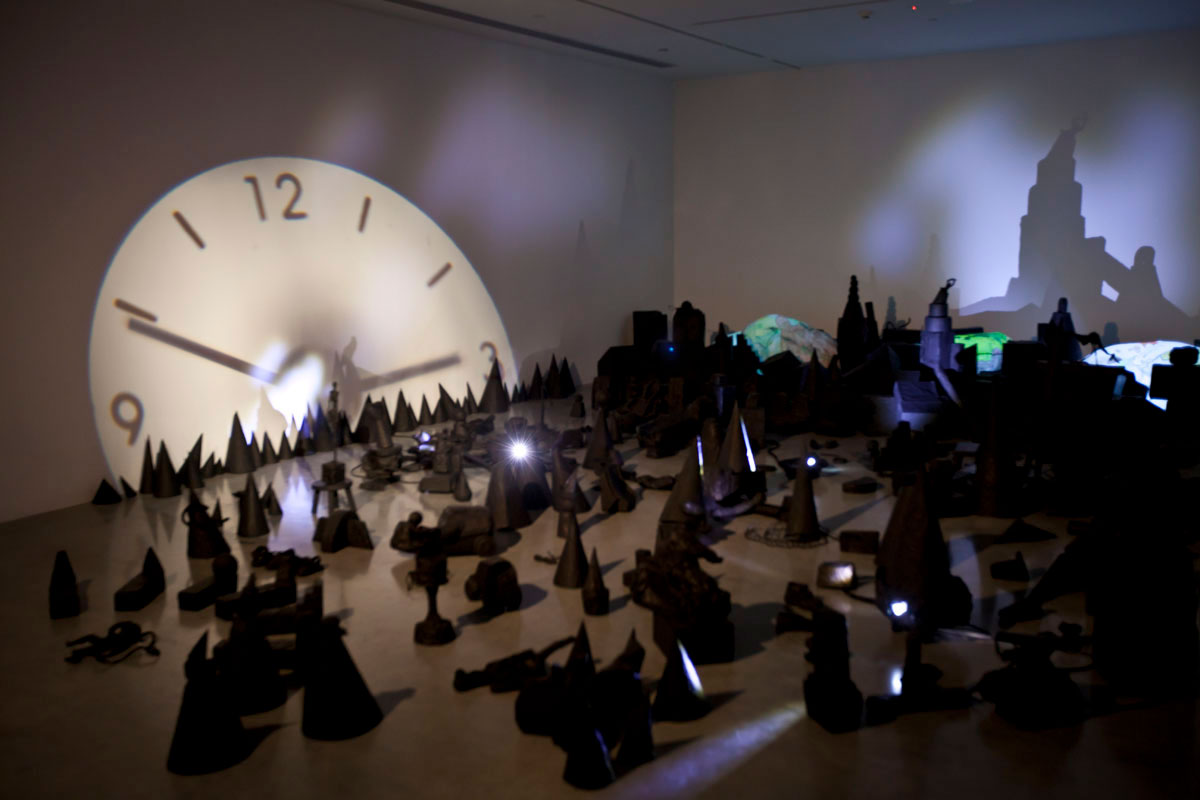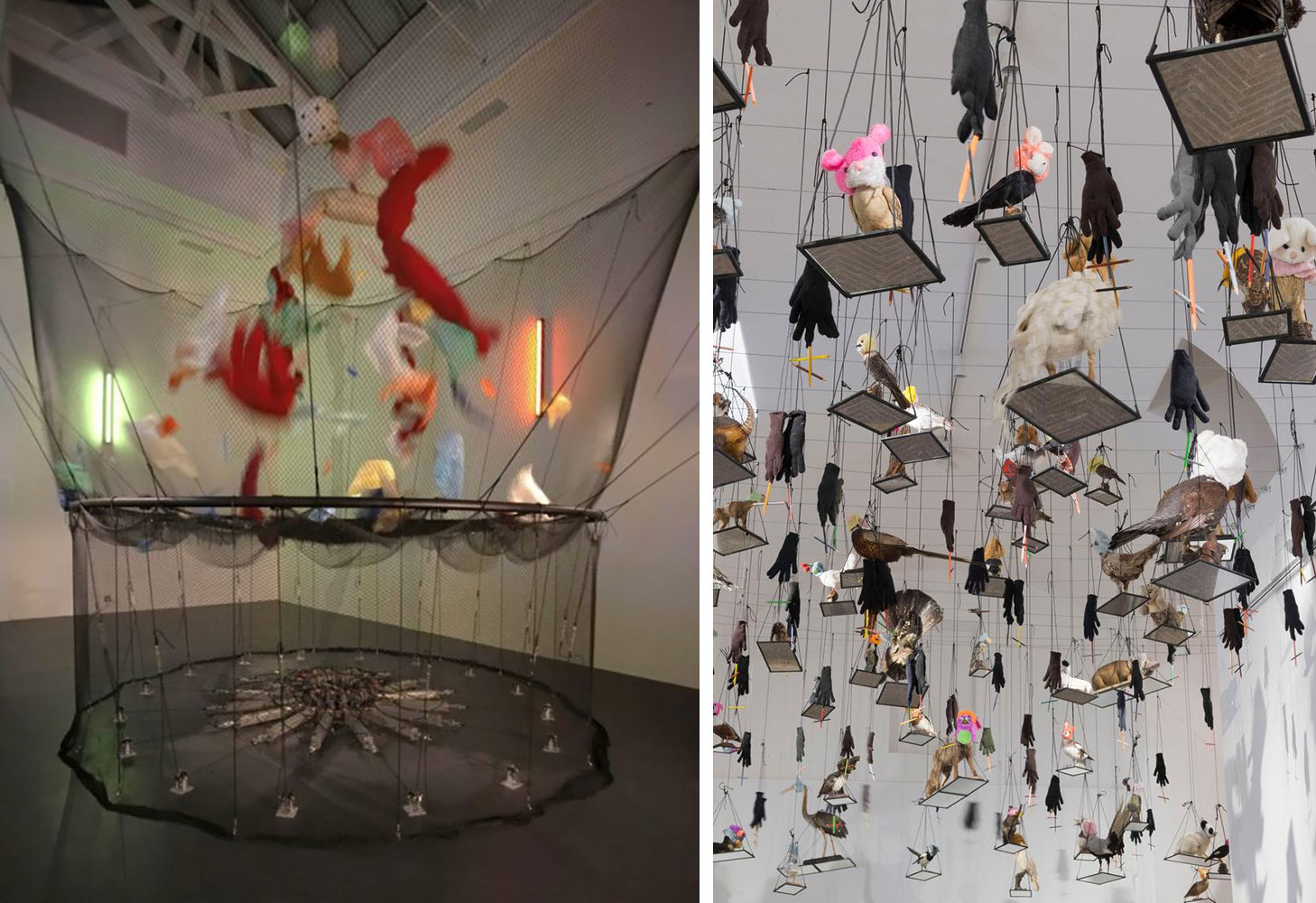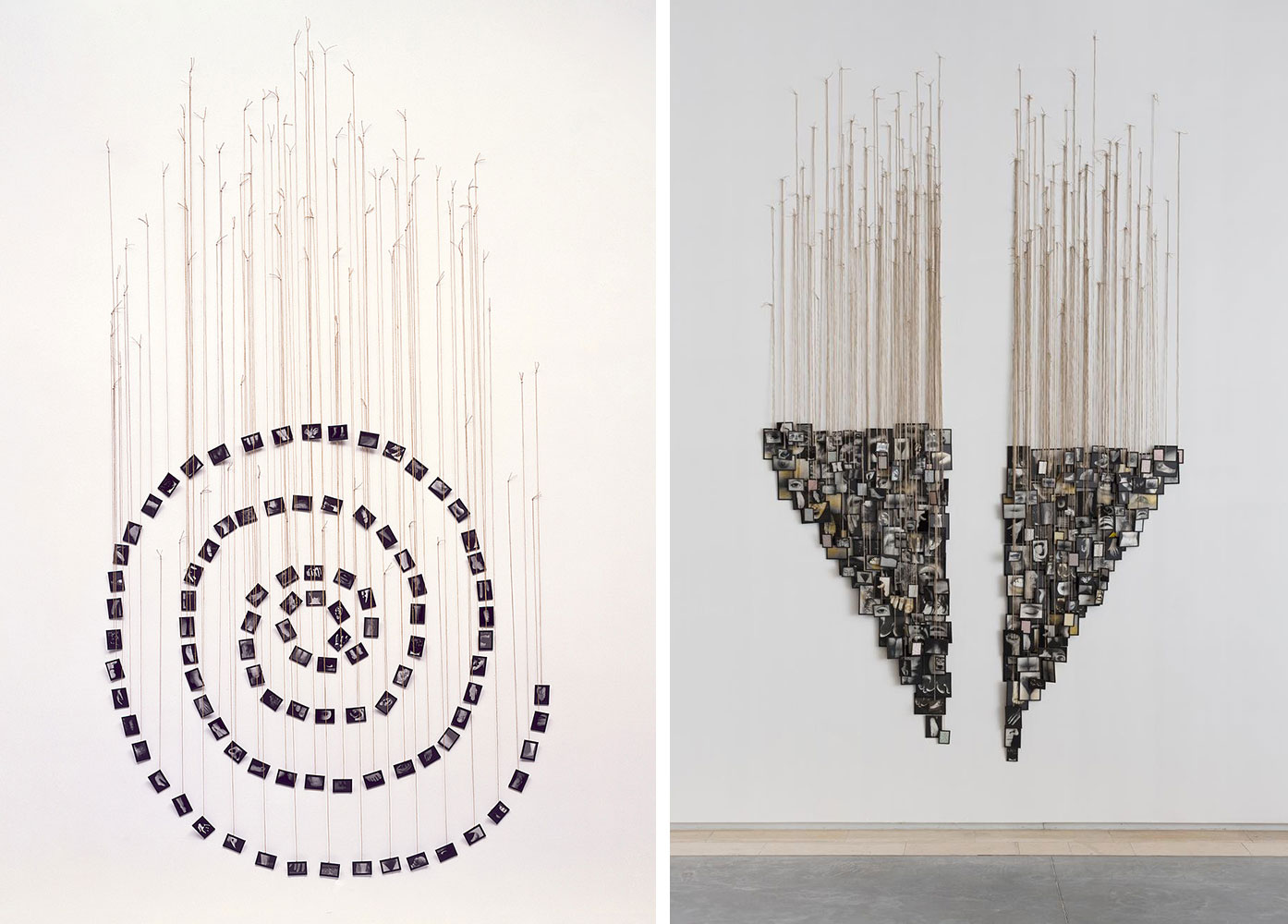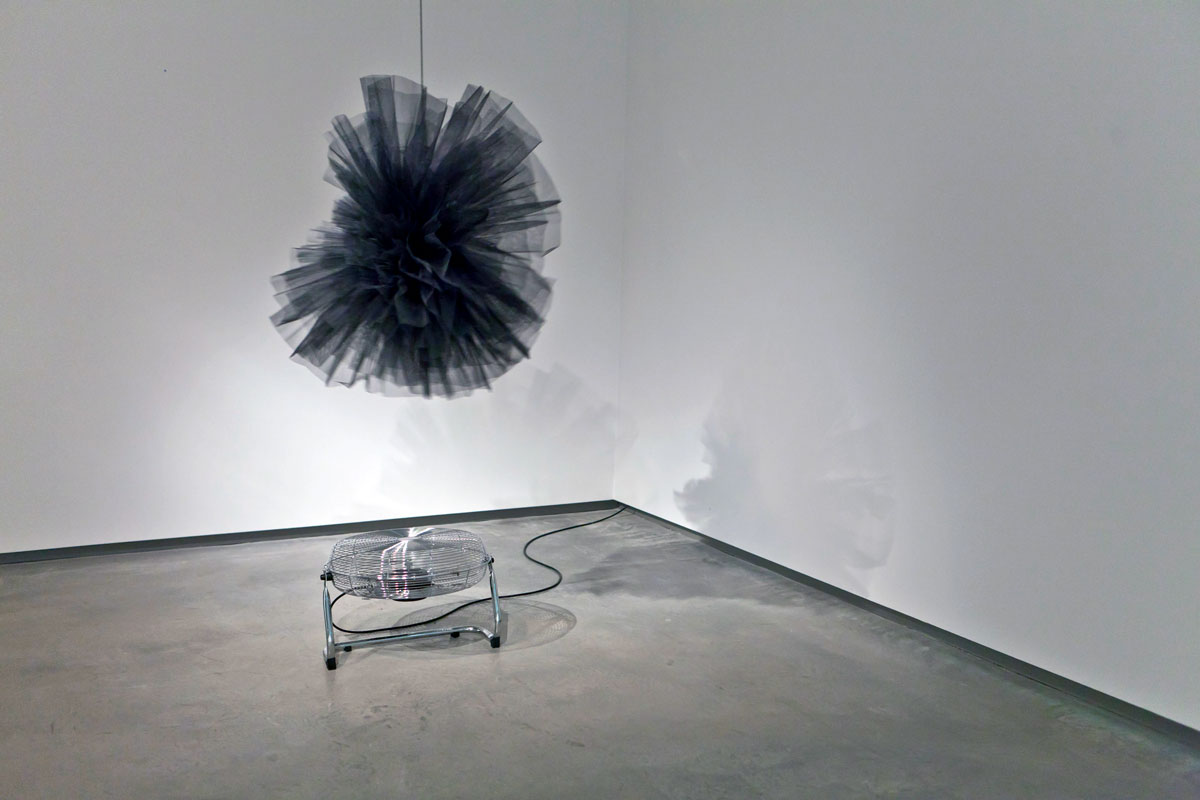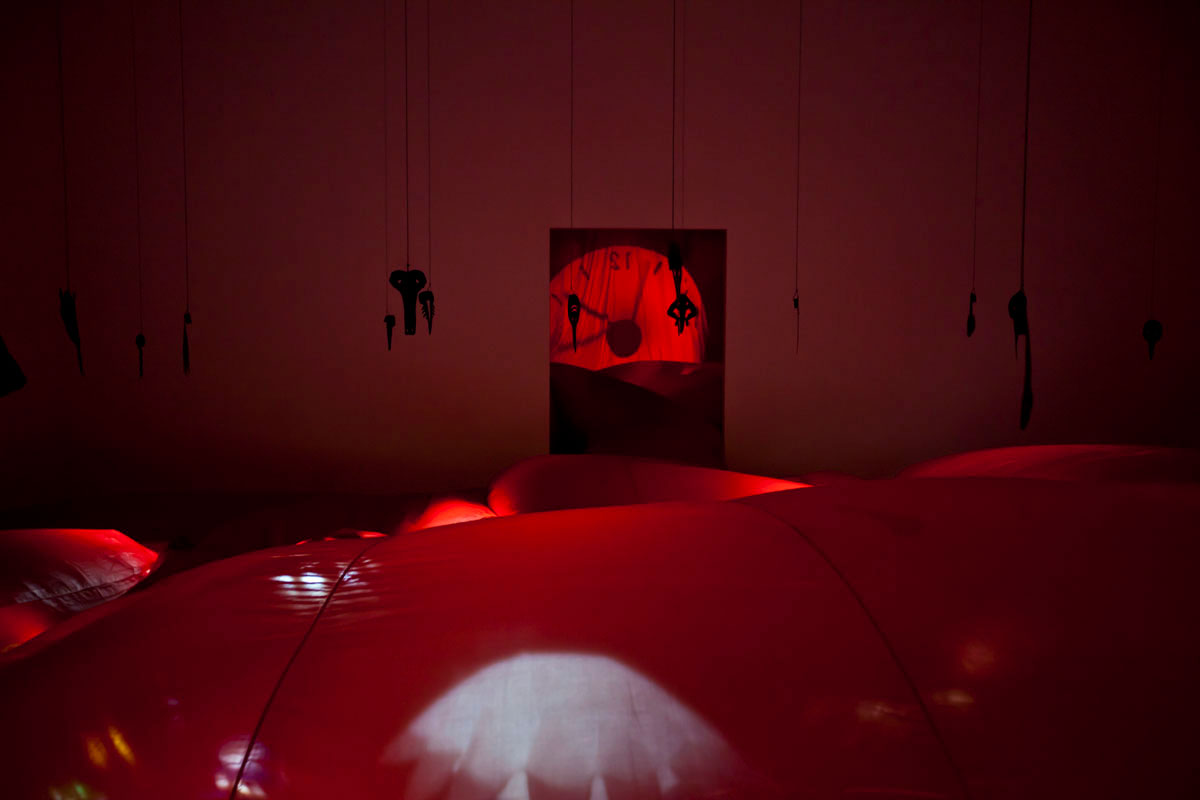TRACES: Annette Messager
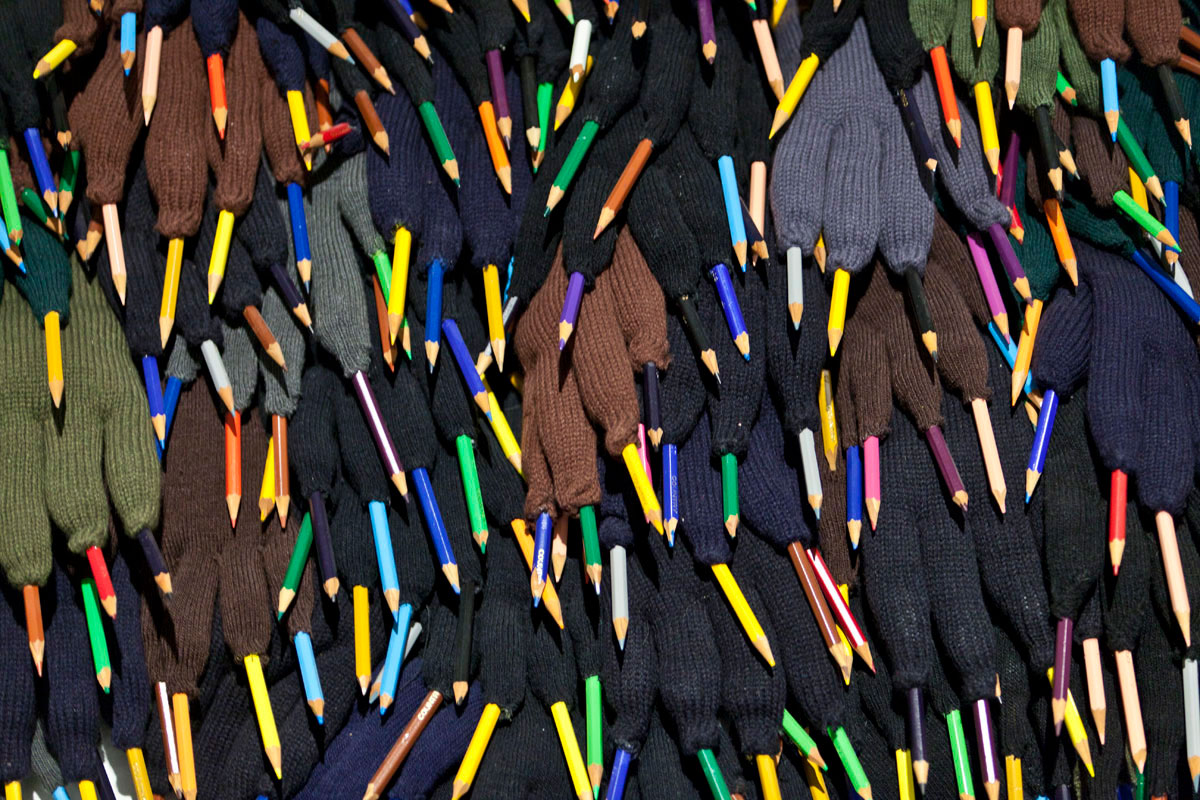 Today is the occasion to bear in mind Annette Messager (30/11/1943- ). Drawing from the everyday, memory, and fairytales, Annette Messager creates dark yet humorous works that interrogate diverse aspects of women’s lives, from their role in society to childhood play, and the human body. This column is a tribute to artists, living or dead, who have left their mark in Contemporary Art. Through documents or interviews, starting with: moments and memories, we reveal out from the past-unknown sides of big personalities, who left their indelible traces in time and history…
Today is the occasion to bear in mind Annette Messager (30/11/1943- ). Drawing from the everyday, memory, and fairytales, Annette Messager creates dark yet humorous works that interrogate diverse aspects of women’s lives, from their role in society to childhood play, and the human body. This column is a tribute to artists, living or dead, who have left their mark in Contemporary Art. Through documents or interviews, starting with: moments and memories, we reveal out from the past-unknown sides of big personalities, who left their indelible traces in time and history…
By Efi Michalarou
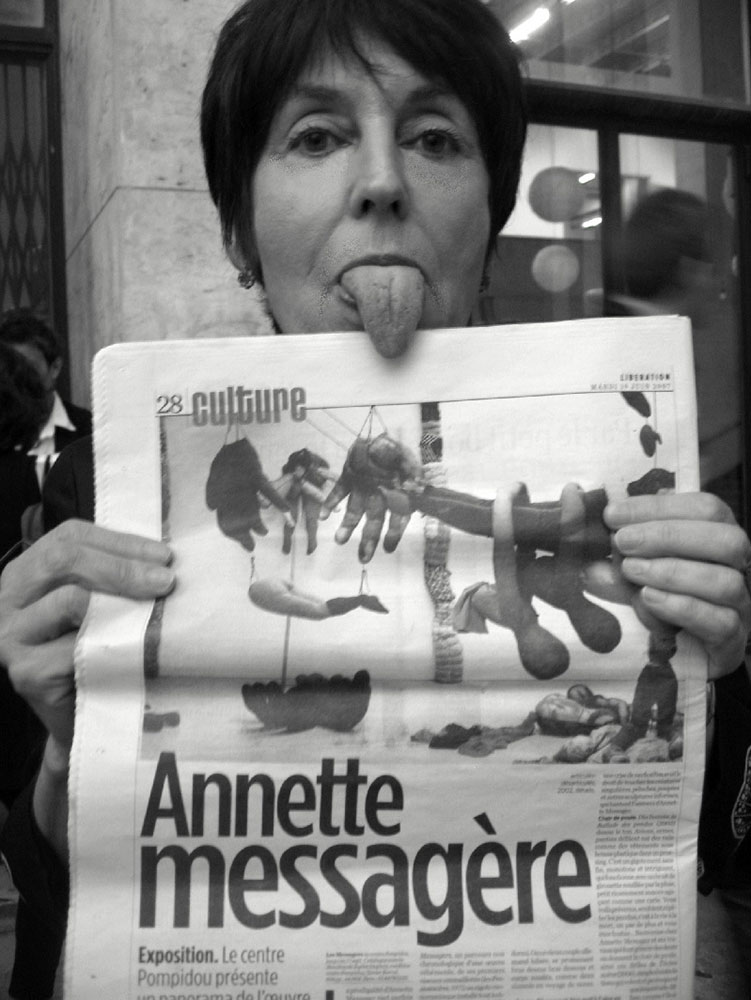 Annette Messager was born in Berck-sur-Mer, France, in 30/111943. As a child, she was encouraged to pursue art by her father, an amateur painter, who took Messager and her brother to nearby churches to see stained-glass windows and altarpieces. From 1962 to 1966, she studied at the École Nationale Supérieure des Arts Décoratifs in Paris, where she produced Surrealist-style sculptures. In 1961, Messager won the grand prize in an international competition sponsored by Kodak after her mother entered one of her early photographs. In 1964, Messager traveled to Asia purchasing a camera in Hong Kong, she took photographs there and during her travels in Japan, the Philippines, Cambodia, India, and Israel. The following year, she visited Nepal and Ceylon, and the United States soon after. Messager was affected by the student and worker riots of May 1968 and the rise of the feminist movement. As the traditional hierarchical and autocratic codes of French society disintegrated, she found that art was now to be encountered in the ordinary, non-institutional spaces of life. In 1971, Galerie Germain in Paris asked Messager to participate in a wool-themed exhibition. She submitted a dead sparrow for which she had knitted a covering. This marked the beginning of her series “The Boarders” (1971–72), in which she first began to incorporate taxidermy animals into her sculpture. From 1971 to 1974, she created scrapbook albums of writings, drawings, and photographs that could be displayed on a gallery wall, as in “How My Friends Would Do My Portrait” (1972). The 81 images in “Voluntary Torture” (1972), taken from fashion magazines, reveal close-ups of women’s faces or bodies while receiving various “tortures”, as Messager dubbed them, to meet the standard conventions of feminine beauty. In 1973, in the drawing “The Bedroom Works/The Studio Works”, the artist sketched her apartment, dividing it into the bedroom (territory of Annette Messager the collector), and the studio (belonging to Annette Messager artist). These personas would recur throughout Messager’s subsequent oeuvre, along with others—the trickster, the practical woman, the peddler—that further blurred the distinction between reality and fiction in her work. By the early 1980s, Messager was creating installations such as the “Chimaeras” (1982–84), using large-scale images of grotesque creatures and oversize everyday objects, all composed from photographs of distorted body parts that she then painted over. Her violent exploration of the human body continued in the series “My Trophies” (1986–88), in which she created her own “maps” of the body by painting over photographs of body parts, printed at varying scales. In “My Works” (1987), Messager again deployed photographs on a gallery wall, this time connecting them with text written on the wall in the artist’s flowing script. For a mid-career retrospective at the Musée de Grenoble in 1989, she developed “My Little Effigies” (1988), a series in which she hung photographs of body parts around the necks of stuffed animals, usually arrayed in groups across a wall with a single word inscribed numerous times in crayon on the wall below each. “My Vows” (1988–91), sculptural assemblages of photographs of different sections of the body, make reference to the artist’s religious background by evoking the form of the ex-voto. In “The Pikes” (1991–93), various objects, including photographs, maps, and doll parts, are impaled on rods. Messager continued to explore the possibilities of installation throughout the 1990s, suspending soft sculptures of internal organs from the ceiling in “Penetratio”n (1994) and using pillows, stuffed animals, and netting to create a bizarre environment in “Les Messagers de l’été” (1999). In recent years, she has extended her exploration of the body and its macabre fragmentations. “Jointed/Disjointed” (2001–02) comprises stuffed, yet flaccid, human and animal parts as well as hybrid forms combining bits of both, all of which are strung from the ceiling. For her monumental installation “Them and Us, Us and Them” (2002), Messager displayed hundreds of taxidermy birds; small mammals hooded in stuffed-animal heads; and handmade, oversize, glove-shaped creations on mirrored platforms suspended from the ceiling at varied heights. “Skeleton–Teddy Bear” (2002) consists of a stuffed teddy bundled in black netting, mounted upside down on the wall, and sporting monsterlike, skeletal hands clipped to its body. In the installation “Spectres of the Comtesse Hospice” (2004), giant cumbersome organs made of garish imitation leather descend from the ceiling in dark netting only to be raised up again at irregular intervals. This concept was given a second, enlarged manifestation in the entrance hall and basement of the Centre Georges Pompidou on the occasion of Messager’s major retrospective in 2007. In 2005, she represented France at the Venice Biennale, where she won the Golden Lion for her Pinocchio-inspired installation that transformed the French pavilion into a casino. In 2014, she created an installation titled “Les Interdictions”, a combination of the puppet motif and a pattern of sixty eight prohibitory signs from around the world. The only sign that was invented by the artist is a sign condemning prostitution.
Annette Messager was born in Berck-sur-Mer, France, in 30/111943. As a child, she was encouraged to pursue art by her father, an amateur painter, who took Messager and her brother to nearby churches to see stained-glass windows and altarpieces. From 1962 to 1966, she studied at the École Nationale Supérieure des Arts Décoratifs in Paris, where she produced Surrealist-style sculptures. In 1961, Messager won the grand prize in an international competition sponsored by Kodak after her mother entered one of her early photographs. In 1964, Messager traveled to Asia purchasing a camera in Hong Kong, she took photographs there and during her travels in Japan, the Philippines, Cambodia, India, and Israel. The following year, she visited Nepal and Ceylon, and the United States soon after. Messager was affected by the student and worker riots of May 1968 and the rise of the feminist movement. As the traditional hierarchical and autocratic codes of French society disintegrated, she found that art was now to be encountered in the ordinary, non-institutional spaces of life. In 1971, Galerie Germain in Paris asked Messager to participate in a wool-themed exhibition. She submitted a dead sparrow for which she had knitted a covering. This marked the beginning of her series “The Boarders” (1971–72), in which she first began to incorporate taxidermy animals into her sculpture. From 1971 to 1974, she created scrapbook albums of writings, drawings, and photographs that could be displayed on a gallery wall, as in “How My Friends Would Do My Portrait” (1972). The 81 images in “Voluntary Torture” (1972), taken from fashion magazines, reveal close-ups of women’s faces or bodies while receiving various “tortures”, as Messager dubbed them, to meet the standard conventions of feminine beauty. In 1973, in the drawing “The Bedroom Works/The Studio Works”, the artist sketched her apartment, dividing it into the bedroom (territory of Annette Messager the collector), and the studio (belonging to Annette Messager artist). These personas would recur throughout Messager’s subsequent oeuvre, along with others—the trickster, the practical woman, the peddler—that further blurred the distinction between reality and fiction in her work. By the early 1980s, Messager was creating installations such as the “Chimaeras” (1982–84), using large-scale images of grotesque creatures and oversize everyday objects, all composed from photographs of distorted body parts that she then painted over. Her violent exploration of the human body continued in the series “My Trophies” (1986–88), in which she created her own “maps” of the body by painting over photographs of body parts, printed at varying scales. In “My Works” (1987), Messager again deployed photographs on a gallery wall, this time connecting them with text written on the wall in the artist’s flowing script. For a mid-career retrospective at the Musée de Grenoble in 1989, she developed “My Little Effigies” (1988), a series in which she hung photographs of body parts around the necks of stuffed animals, usually arrayed in groups across a wall with a single word inscribed numerous times in crayon on the wall below each. “My Vows” (1988–91), sculptural assemblages of photographs of different sections of the body, make reference to the artist’s religious background by evoking the form of the ex-voto. In “The Pikes” (1991–93), various objects, including photographs, maps, and doll parts, are impaled on rods. Messager continued to explore the possibilities of installation throughout the 1990s, suspending soft sculptures of internal organs from the ceiling in “Penetratio”n (1994) and using pillows, stuffed animals, and netting to create a bizarre environment in “Les Messagers de l’été” (1999). In recent years, she has extended her exploration of the body and its macabre fragmentations. “Jointed/Disjointed” (2001–02) comprises stuffed, yet flaccid, human and animal parts as well as hybrid forms combining bits of both, all of which are strung from the ceiling. For her monumental installation “Them and Us, Us and Them” (2002), Messager displayed hundreds of taxidermy birds; small mammals hooded in stuffed-animal heads; and handmade, oversize, glove-shaped creations on mirrored platforms suspended from the ceiling at varied heights. “Skeleton–Teddy Bear” (2002) consists of a stuffed teddy bundled in black netting, mounted upside down on the wall, and sporting monsterlike, skeletal hands clipped to its body. In the installation “Spectres of the Comtesse Hospice” (2004), giant cumbersome organs made of garish imitation leather descend from the ceiling in dark netting only to be raised up again at irregular intervals. This concept was given a second, enlarged manifestation in the entrance hall and basement of the Centre Georges Pompidou on the occasion of Messager’s major retrospective in 2007. In 2005, she represented France at the Venice Biennale, where she won the Golden Lion for her Pinocchio-inspired installation that transformed the French pavilion into a casino. In 2014, she created an installation titled “Les Interdictions”, a combination of the puppet motif and a pattern of sixty eight prohibitory signs from around the world. The only sign that was invented by the artist is a sign condemning prostitution.
